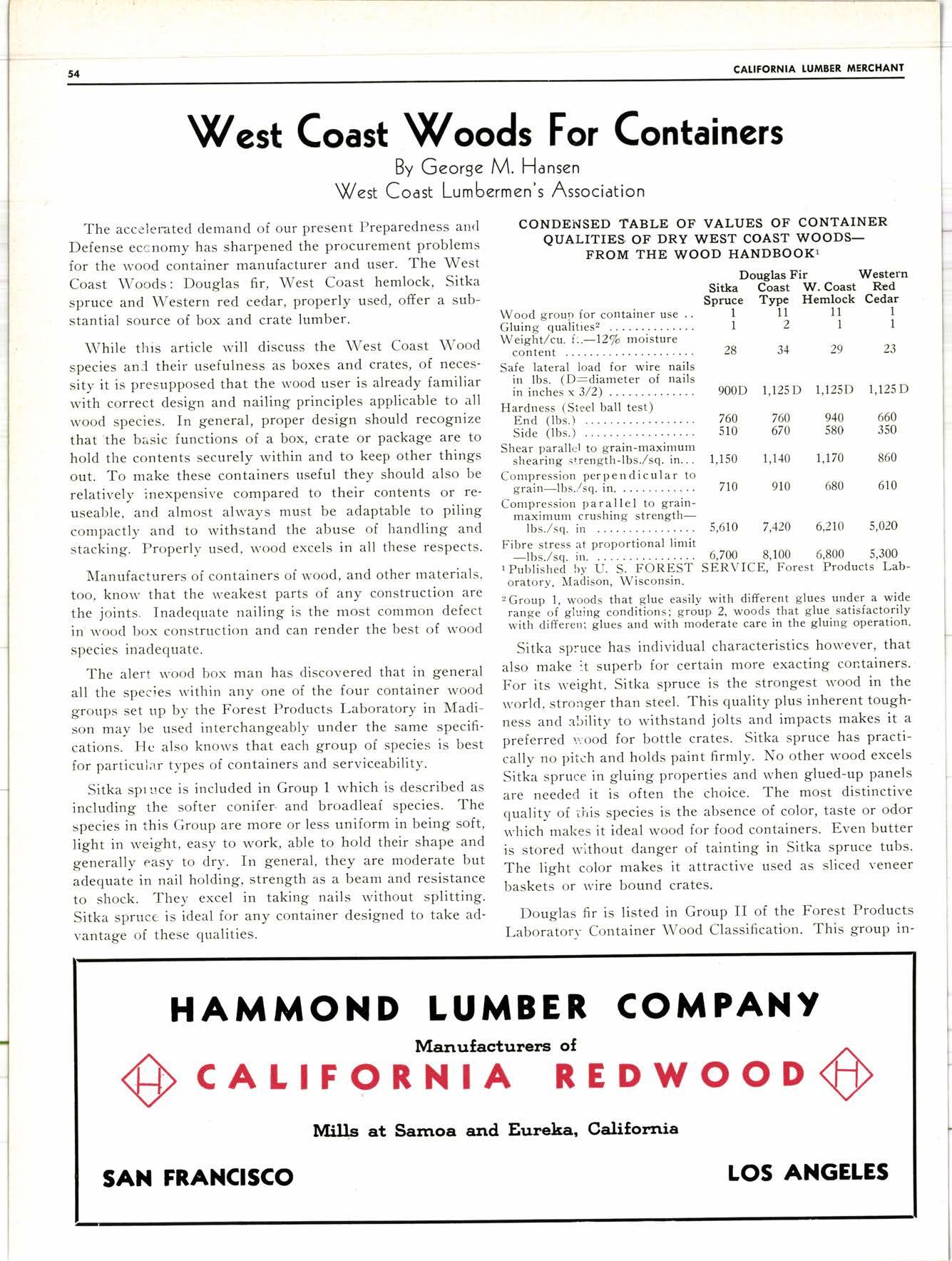
2 minute read
\Uest Coast \foods For Containers
By Georse M. Hansen \0est Coast Lumbermen's Association
The accelerated demand of our present Preparedness antl Defense eccnomy has sharpened the procurement problems for the wood container manufacturer and user. The West Coast Wocds: Douglas fir, \Mest Coast hemlock, Sitka spruce and Western red cedar, properly used, offer a substantial source of box and crate lumber.
While this article will discuss the West Coast Wood species anl their usefulness as boxes and'crates, of necessity it is presupposed that the wood user is already familiar with correct design and nailing principles applicable to all wood species. In general, proper design should recognize that'the basic functions of a box, crate or package are to hold the contents securely within and to keep other things out. To make these containers useful they should also be relatively inexpensive compared to their contents or reuseable, and almost always must be adaptable to piling compactly and to withstand the abuse of handling and stacking. Properly used, wood excels in all these respects.
Manufacturers of containers of wood, and other materials, too, know that the weakest parts of any construction are the joints. Inadequate nailing is the most common defect in'wood box constrttction and can render the best of wood species inadequate.
The alert wood box man has discovered that in general all the species within any one of the four container wood groups set up by the Forest Products Laboratory in Madison may be used interchangeably under the same specifications. He also knows that each group of species is best for particulrr types of containers and serviceability.
Sitka spr'.rce is included in Group 1 which is described as including the softer conifer' and broadleaf species. The species in this Group are more or less uniform in being soft, light in weight, easy to work, able to hold their shape and generally easy to dry. In general, they are moderate but adequate in nail holding, strength as a beam and resistance to shock. They excel in taking nails without splitting' Sitka spruce is ideal for any container designed to take advantage of these qualities.
CONDENSED TABLE OF VALUES OF CONTAINER QUALITIES OF DRY WEST COAST WOODSFROM THE WOOD HANDB'OOKI
2Group l, woods that glue easily with different glues under a wide .ange of gluing conditions; group 2, woods that glue-satisfactorily witE diffeierr'. glues and with moderate care in the gluing operation. Sitka spruce has individual characteristics however, that also make :t superb for certain more exacting containers' For its 'iveight, Sitka spruce is the strongest r'vood in the 'ivorld, stronger than steel. This quality plus inherent toughness and ebility to withstand jolts and impacts makes it a preferred wood for bottle crates. Sitka spruce has practically no pitch and holds paint firmly. No other wood excels Sitka spruce in gluing properties and when glued-up panels are needecl it is often the choice. The most distinctive quality of this species is the absence of color, taste or odor u,hich makes it ideal wood for food containers. Even butter is stored without danger of tainting in Sitka spruce tubs' The light color makes it attractive used as sliced veneer baskets or rvire bound crates.
Douglas fir is listed in Group II of the Forest Products Laboratorv Container Wood Classification. This group in'
Dove Codock Oz Crenshsw










